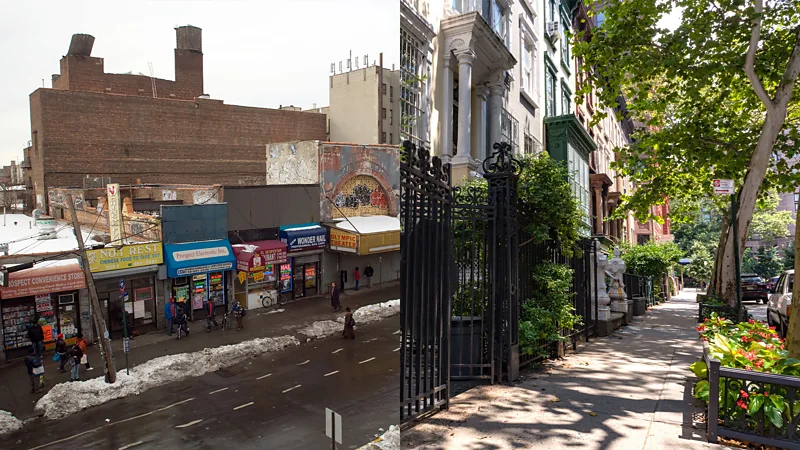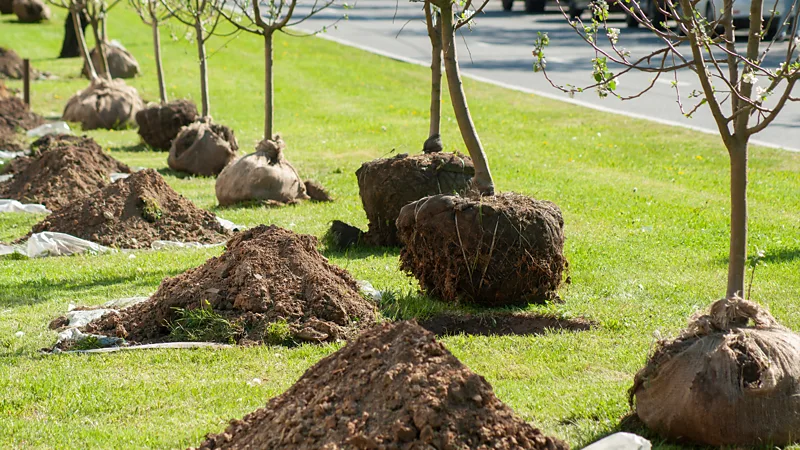The life-changing power of urban trees in New York City
 Planting trees not only enhances health and reduces expenses, but targeting tree-poor communities of color can yield particularly significant advantages.
Planting trees not only enhances health and reduces expenses, but targeting tree-poor communities of color can yield particularly significant advantages.
Volunteers gather weekly to plant up to 50 trees in Soundview Park, a 205-acre oasis along the Bronx River in New York City. The park is a haven for diverse wildlife, including eastern box turtles, rare birds, and even a coyote family. Many dedicated volunteers, like John Vallacchi from the environmental justice organization the Bronx is Blooming, have been investing their Saturdays in this endeavor for years, feeling a deep connection to the park.
Adjacent to Soundview Park lie the neighborhoods of Hunts Point and Longwood, where nearly 94% of the population consists of people of color. Amidst warehouses and crowded apartment buildings stands the world's largest food distribution center, the Hunts Point Terminal Market, which sees a staggering flow of up to 13,000 diesel trucks daily.
This heavy traffic contributes to the area's alarming air pollution levels, among the highest in the city. Despite the proximity to Soundview Park, these neighborhoods suffer from a scarcity of greenery, resulting in severe urban heat island effects, explains Victoria Sanders, manager of climate and health programs at the NYC Environmental Justice Alliance.
The disparity in green space investment between these areas leads to stark temperature variations.
Each tree planted in Soundview Park aims to sequester carbon, enhance air quality, and mitigate stormwater runoff. However, recent research suggests that planting trees in dense residential areas across the river could yield even greater benefits.
Addressing Racial Disparities in Green Spaces for Health and Energy Benefits
 The benefits of increased access to nature are well-documented, spanning improved cognitive function, blood pressure, mental health, physical activity, and sleep. However, minority neighborhoods across the United States face significant disparities, with 11% less tree canopy and 14% more artificial surfaces like asphalt and cement compared to majority-white neighborhoods.
The benefits of increased access to nature are well-documented, spanning improved cognitive function, blood pressure, mental health, physical activity, and sleep. However, minority neighborhoods across the United States face significant disparities, with 11% less tree canopy and 14% more artificial surfaces like asphalt and cement compared to majority-white neighborhoods.
This imbalance is most pronounced in the northeastern US, where dense urban cores of minority neighborhoods contrast with leafier suburbs and exurbs inhabited by predominantly white communities. Benita Hussain, chief program officer for tree equity at American Forests, highlights how certain communities have been systematically excluded from essential services like tree coverage and the associated cooling and cleansing benefits.
A recent study by researchers at The Nature Conservancy quantifies the health and energy benefits of a comprehensive and targeted tree-planting initiative across the US. By focusing on historically tree-deficient areas, primarily communities of color, the program would not only offset its own costs but also generate substantial savings in healthcare and energy bills.
Currently, white neighborhoods enjoy greater tree cover, resulting in 190 fewer deaths, 30,000 fewer doctors' visits, and 1.4 terawatt hours less electricity usage annually compared to minority areas. Strategic tree planting in underserved areas could prevent an additional 460 heat-related deaths and 81,000 heat-related illnesses each year, while saving an additional 4.3 terawatt hours of electricity.
Differing Strategies in Urban Reforestation for Climate Mitigation
Cities like Portland and Baltimore have long prioritized urban reforestation as part of their climate mitigation efforts, driven by distinct motivations that shape their approaches. While some focus on carbon sequestration, directing planting efforts towards spacious areas like predominantly white suburbs or existing forests, others prioritize heat-risk reduction. These initiatives target densely populated areas with low tree canopy cover, presenting unique challenges such as limited plantable space and poor soil quality. Only 17% of New York City's 7 million trees are in areas populated largely by people of colour (Credit: Getty Images)
Only 17% of New York City's 7 million trees are in areas populated largely by people of colour (Credit: Getty Images)
Nneka Sobers, an urban designer and assistant director of product development at Cornell University's Urban Tech Hub, emphasizes the importance of strategic tree planting in underserved communities of color for maximum impact. In cities like New York, where only 17% of the seven million trees are located in predominantly non-white neighborhoods, the disparity in tree coverage exacerbates heat-related risks. According to Rob McDonald, lead author of The Nature Conservancy paper, these communities experience an average summer temperature increase of 0.95°C (1.7°F) compared to predominantly white neighborhoods, translating to a 4.3% higher heat wave mortality risk.
Addressing Budget Challenges and Investing in Urban Forestry Equity
Efforts to bridge the disparity in urban forestry have faced obstacles, particularly due to short-term budgets tied to changing administrations, leading to uncertainties and inconsistent funding. Adam Ganser, executive director of New Yorkers for Parks, highlights the vulnerability of parks funding during tight budget periods.
Despite these challenges, recent investments have signaled a renewed commitment to address the issue. The 2022 Inflation Reduction Act allocated $1.5 billion to organizations dedicated to urban forestry in historically underserved communities.
In 2023, New York City achieved a record year in tree planting, with over 13,000 saplings planted. Notably, more than a third of these were placed in neighborhoods deemed highly vulnerable to heat, as determined by factors like green space availability, access to air conditioning, and the proportion of low-income or black residents. While neighborhoods like Soundview, adjacent to the Bronx River Park, benefited from this initiative, nearby areas like Hunts Point and Longwood did not receive the same level of attention.
Challenges in Funding and Maintenance for Urban Parks
The New Yorkers for Parks organization highlights the significant backlog of deferred maintenance in the city's park system, amounting to $590 million, a consequence of years of insufficient funding and staffing constraints.
In 2023, the NYC Parks department, responsible for managing 30,000 acres of land and hundreds of thousands of street trees, received approximately 0.6% of the city's operating budget. This allocation is expected to remain unchanged in 2024. In contrast, most major US cities allocate 1-2% of their budgets to park operations and maintenance.
Mike Treglia, a lead scientist at the Nature Conservancy, notes that while New York City's budget is substantial compared to many other cities, the portion allocated to parks does not adequately reflect the extensive urban forest area. Researchers estimate that increasing national tree cover by an additional 5%, with a focus on communities of color, would incur annual planting and maintenance costs of $29 million but yield $32 million in benefits.
Prioritizing areas with the greatest need for trees could prove financially advantageous; distributing saplings evenly across all neighborhoods would result in expenses outweighing gains.
Empowering Localized Planning for Climate Resilience
 In August, a team of design researchers at Cornell University introduced Tree Folio, aiming to enhance planners' understanding of local contexts. This 3D mapping tool utilizes light detection and ranging (lidar) technology to generate detailed maps of individual trees, accompanied by data on their shade coverage and quality.
In August, a team of design researchers at Cornell University introduced Tree Folio, aiming to enhance planners' understanding of local contexts. This 3D mapping tool utilizes light detection and ranging (lidar) technology to generate detailed maps of individual trees, accompanied by data on their shade coverage and quality.
The tool's focus on granularity is deliberate, reflecting the diverse ways in which climate change impacts individuals. According to Alex Kobald, lead designer of Tree Folio, climate change is experienced uniquely at the individual level.
For example, planting a tree on an east-west street, which receives more sun exposure throughout the day, has a greater impact than on a north-south street, especially in densely built neighborhoods. Nneka Sobers suggests that strategically placing trees near bus stops allows more people to benefit from their shade.
The Tree Folio team hopes their tool will foster community-led planning initiatives focused on trees. Kobald emphasizes the importance of moving beyond generalized responses to climate change, leveraging the wealth of available datasets and processing capabilities to devise tailored solutions.



































